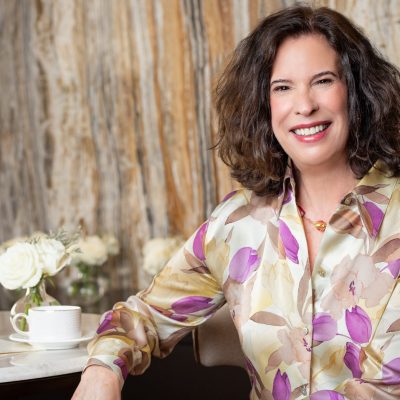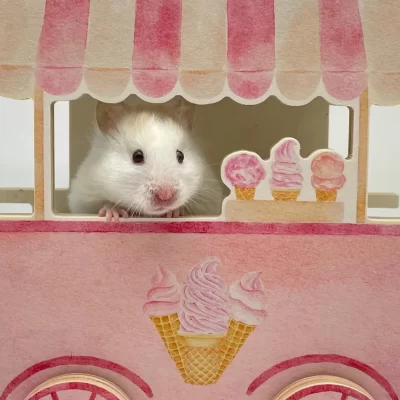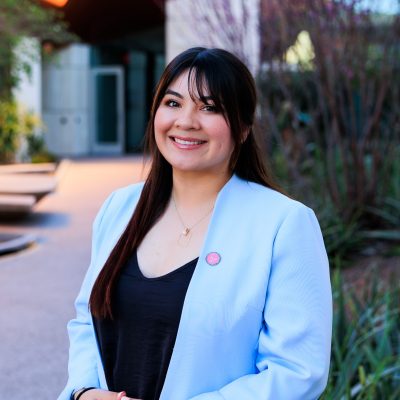Office Doors: A Day with Alessandra Navidad

President and CEO of Arizona Animal Welfare League
4:15 A.M. >> HUSTLE, BUSTLE + QUIET
I begin my day by going to the gym for an hour in the morning. I must be out of the house by 7 a.m. to drop off my 13-year-old identical twin girls at the bus stop for school. My husband takes my 16-year-old stepdaughter to work, and my 17-year-old son drives himself to school. I head into work from there so I can be one of the first ones in the office. I use this time to walk the kennels — even the dogs are quiet! I also spend time journaling, goal setting, planning for the day and prioritizing what needs to be done during the week. This precious time with few distractions allows me to think about big things, such as how to reduce stress levels for the cats and improve their housing, or how to reduce the length of stay for the animals.
8 A.M. >> A JOB OF PEOPLE CARE
Since I’m relatively new in my role, I spend a lot of time on the organization’s people and culture pieces, as these are important to me. I visit our two clinics that are adjacent to each other and share a surgery suite. One clinic serves homeless animals and the other, MD Petcare, is public-facing. I am hands-on because we are currently without a medical director, and I am leading the medical team. We are trying to build a pipeline and more diverse medical team, so I manage the recruiting, interviewing and hiring of candidates. I like being at the clinics to see the team in action and learn more about what they do.
My philosophy as a leader is to spend one-on-one time with my 10 direct reports. We discuss how we can work together to support their teams, what help they need to be a better manager and any struggles they are experiencing.
We are here to rescue animals that have suffered tremendous trauma by providing them with the care, love and compassion they need to get better and ultimately be available for adoption. This can take a toll on the team emotionally, and they can experience compassion fatigue. I am conscious of giving my staff time to connect with each other and decompress.
10 A.M. >> AN ORGANIZATION BUILT ON RELATIONSHIPS
Connecting and meeting with donors is a big part of my role, whether via emails, phone calls or tours. I take donors on tours twice a week. It is a great way for me to learn more about the 50-year history of the organization and connect with our passionate donors.
I continue to learn the business of animal welfare and our various programs — adoptions, behavior, foster, medical — a full range of services for animals. I try to balance the day learning as much as I can about the team and programs, including identifying gaps and growth areas, with fundraising. I focus on what I can do as a CEO to help the organization move forward and am humble in recognizing what I don’t know. I do not need to know everything. I have a strong team of veterinarians and staff who are experts. I am lucky and privileged to be here.
1:30 P.M. >> FOCUS ON A COMMUNITY’S FURRY FRIENDS
We are the only organization in the state that received a grant from PetSmart Charities to conduct a needs assessment of the 160,000 underserved Latinx community living near our shelter. It’s a long-term project to invest in communities of color by giving pet owners resources, so they don’t have to surrender their animals. We want to do a better job of meeting their needs and identifying their barriers to accessing veterinary care. My outreach staff and I are identifying and meeting with potential partners, such as New Pathways for Youth, Mountain Park Health Center and faith-based organizations, asking them to join this effort by distributing our survey to their pet owners.
3 P.M. >> SUCCESS IS THE CAT’S MEOW
We are seeing a dramatic increase in the number of animals coming into the shelter system because people are struggling economically, impacting their ability to care for their animals. We are incorporating shelter intervention strategies by providing case management and additional support so an animal can remain in its home. For example, our AAWL Cares program covers costs for those animals that might be surrendered due to medical expenses.
Despite COVID and staffing challenges, there is a lot we can be proud of. More animals were fostered in 2021 than the previous year. We found permanent, loving homes for 3,600 animals and were able to save more animals with severe medical needs last year than the prior year. We also restarted our monthly vaccine clinics that were on hiatus because of COVID. There is a tremendous need, because public vaccine events couldn’t take place during the pandemic, resulting in an increase in some infectious diseases.
One of the things that makes us unique is our behavior team. We have certified dog and feline behavior managers, and we intend to grow this team. We have hired a full-time foster family coordinator whose focus is to recruit more foster families so animals can move into a home environment and reduce their stress.
5:30 P.M. >> PAW-SOME, QUALITY FAMILY TIME
Since I come into work early, I head home because I feel it’s important for our family to eat dinner together. There are seven of us in our blended family — four kids, my husband and mother-in-law. You learn all kinds of things during dinner. Whenever teenagers are ready to talk, they open up! The remainder of the evening is focused on the kids doing their homework, and I listen to guided meditation with my daughters to wind down from my hectic days.
To learn more, go to aawl.org.






